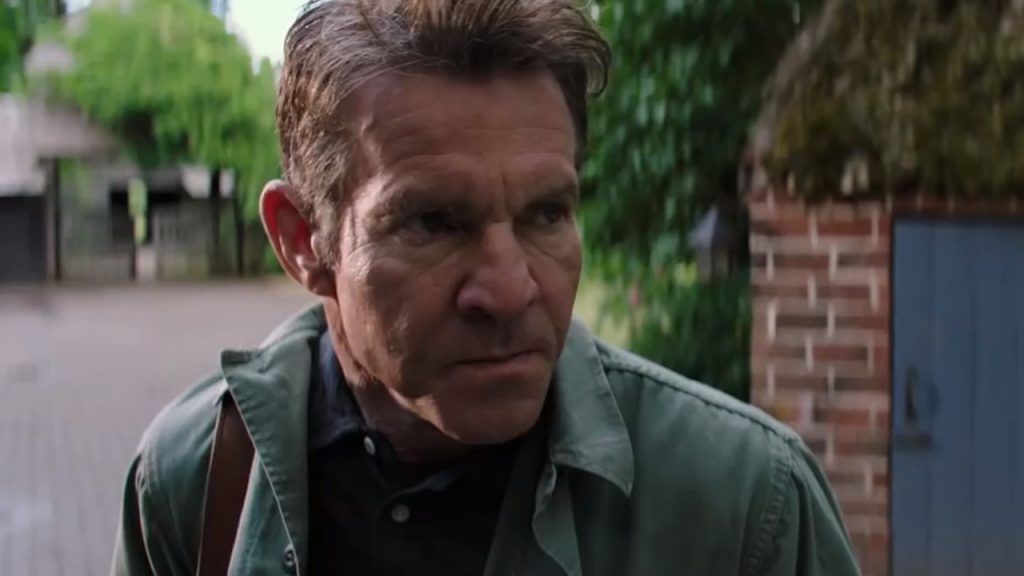If you attended boarding school in Nigeria in the nineties, you most likely heard tales of Madam Koi-Koi.
The fear of Madam Koi-Koi ensured that no one loitered around during night prep. If you needed a toilet break, you did not walk unaccompanied on the corridor. And when night prep was over, no one dared to walk back to the dormitory alone.
Did anyone really encounter this mysterious ghost? It’s hard to tell.
The two-part Netflix film, “The Origin: Madam Koi-Koi,” is based on this ghost who is believed to have haunted boarding schools, and it resonates with Nigerians. It stars Ireti Doyle as Mother Superior, the principal of St Augustine’s Catholic College, Martha Ehinome as Amanda, a new student at the school, and Chuks Joseph of Dark October fame as Lashe. The cast also includes Chioma Chukwuka, Deyemi Okanlawon, Omowunmi Dada, and Baaj Adebule.
“The Origin: Madam Koi-Koi” begins with Amanda’s arrival at St Augustine’s Catholic College. She had to transfer there because her mother got a new job in Malomo town. On the drive to the school, she expresses her displeasure to her mother. But her mother tries to convince her that it is a good school by highlighting the St Augustine’s excellent academic record. Amanda is welcomed by her zealous bunkmate, Edna, who takes her on a quick tour of the school and points out a group of troublemakers – Lashe, Kay-D, Tokunbo and ID. Edna says, “It always ends in tears” for any girl who hangs out with the boys.
Lashe, the ringleader and his clique are bright students. For three years in a row, they have won a competition which has boosted the school’s image. Meanwhile, Amanda’s arrival also threatens Lashe’s dominance. For the first time, someone challenges him in class and she is right. She could unseat him as the most intelligent student in the school and he would not have it. That starts a rivalry.
The boys have a dark side but they enjoy special protection from Mother Superior. On Amanda’s part, she is distracted by a recurring nightmare. The ills of Lashe and his friends awaken the vengeful Madam Koi-Koi who is out for blood.
Props are critical to any period piece. Kudos to the production designer for transporting viewers back to their dorms with those iron bunk beds and buckets. The other props like the Volkswagen Beetle and Datsun cars also bring back memories. One can also relate with the student who is made to lie underneath a bed for refusing to fetch a senior bathing water.
The directors Jay Franklyn Jituboh and Boladale Falola also serve as the screenwriters. In the first instalment of the film, they take viewers on a nostalgic story backed by the good use of props, costumes and locations. By the second part, they throw in a plot twist about the real reason behind Madam Koi-Koi’s vengeful spirit. They succeed because back then, many deaths were blamed on witchcraft due to ignorance and lack of proper medical care. However, the writers begin to lose the audience when Amanda is taken to a herbalist by her school’s head of security and the police investigator but without her mother’s consent.
Some might argue that the horror scenes in the films were not scary enough but back in the day, the scariest thing on Nigerian television was “Willy Willy” – a white-robbed ghost with make-up. It did not use colour or music to create the mood. “The Origin: Madam Koi-Koi,” shows that Nigerian filmmakers have come a long way.
Jituboh and Falola deserve praise for attempting to tell a different Nigerian story that is authentic and relatable. Those are the stories we want to see, not a Hollywood wannabe with a suit-wearing assassin strutting the streets of Balogun Market.




